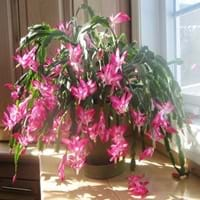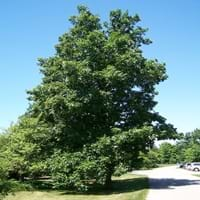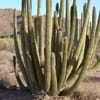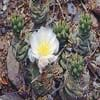Life Span
Perennial
Perennial
Type
Cactus or Succulent
Tree
Origin
North America, Latin America and the Caribbean, Central America, South America
Northeastern United States, Mid-Atlantic United States, Southeastern United States, Central United States, Canada
Types
Not Available
Northern shagbark hickory, Southern shagbark hickory
Number of Varieties
Not Available
Habitat
Coastal Mountains, Humid climates
Woodland Garden Canopy
USDA Hardiness Zone
Not Available
4-8
Sunset Zone
Not Available
Not Available
Habit
Clump-Forming
Oval or Rounded
Flower Color
Purple
Not Available
Flower Color Modifier
Not Available
Bicolor
Fruit Color
Pink
Not Available
Leaf Color in Spring
Green, Dark Green
Not Available
Leaf Color in Summer
Green, Dark Green
Not Available
Leaf Color in Fall
Green, Dark Green
Not Available
Leaf Color in Winter
Green, Dark Green
Not Available
Leaf Shape
Toothed
Pinnate
Plant Season
Spring, Summer, Fall, Winter
Spring, Summer, Fall
Sunlight
Partial Sun, Partial shade
Full Sun
Type of Soil
Loam, Sand
Loam, Sand
The pH of Soil
Acidic, Neutral
Acidic, Neutral
Soil Drainage
Well drained
Well drained
Bloom Time
Not Available
Not Available
Tolerances
Not Available
Not Available
Where to Plant?
Container, Ground, Pot
Ground
How to Plant?
Stem Planting, Transplanting
Seedlings
Plant Maintenance
Medium
Medium
Watering Requirements
Average Water Needs, Do Not over Water, Never Over-water
Average Water Needs
In Summer
Lots of watering
Lots of watering
In Spring
Moderate
Moderate
In Winter
Average Water
Average Water
Soil pH
Acidic, Neutral
Acidic, Neutral
Soil Type
Loam, Sand
Loam, Sand
Soil Drainage Capacity
Well drained
Well drained
Sun Exposure
Partial Sun, Partial shade
Full Sun
Pruning
Prune if you want to improve plant shape, Requires little pruning
Remove damaged leaves, Remove dead branches, Remove dead leaves
Fertilizers
All-Purpose Liquid Fertilizer
Apply 10-10-10 amount
Pests and Diseases
Red blotch
Leaf spot, Powdery mildew, Trunk Rot, Verticillium Wilt
Plant Tolerance
Drought
Drought
Flowers
Showy
Insignificant
Flower Petal Number
Not Available
Not Available
Foliage Texture
Bold
Not Available
Foliage Sheen
Glossy
Not Available
Attracts
Not Available
Mice, Red and Gray Squirrels
Allergy
Eye irritation, sneezing
breathing problems, Mouth itching, Sore Throat, Swelling, Throat itching
Aesthetic Uses
Beautification, Landscape Designing, Showy Purposes
Not Used For Aesthetic Purpose
Beauty Benefits
Not Available
Moisturizing
Environmental Uses
Air purification
Air purification
Medicinal Uses
Not Available
Analgesic, Antirheumatic
Part of Plant Used
Leaves
Sap, Seeds
Other Uses
Decoration Purposes, Showy Purposes, Used as Christmas Tree, Used as Ornamental plant
Used as an excellent fuel, Used in pies, cakes, Used to make yellow dye, used to prepare nut milk
Used As Indoor Plant
Yes
No
Used As Outdoor Plant
Yes
Yes
Garden Design
Container, Houseplant, Rock Garden, Wall
Edible, Shade Trees
Botanical Name
SCHLUMBERGERA x buckleyi
CARYA ovata
Common Name
Thanksgiving Cactus, Crab Cactus
Shagbark Hickory
In Hindi
क्रिसमस कैक्टस
Shagbark Hickory
In German
Weihnachtskaktus
Shagbark Hickory
In French
Cactus de Noël
Caryer ovale
In Spanish
Cactus de Navidad
Shagbark Hickory
In Greek
Χριστούγεννα Cactus
Shagbark Hickory
In Portuguese
Cacto de Natal
Shagbark Hickory
In Polish
Christmas Cactus
ORZESZNIK PIĘCIOLISTKOWY
In Latin
Nativitatis Cactus
Carya
Phylum
Magnoliophyta
Magnoliophyta
Class
Magnoliopsida
Magnoliopsida
Order
Caryophyllales
Juglandales
Family
Cactaceae
Juglandaceae
Genus
Schlumbergera
Carya
Clade
Angiosperms, Core eudicots, Eudicots
Angiosperms, Eudicots, Rosids
Tribe
Not Available
Juglandeae
Subfamily
Cactoideae
Juglandoideae
Number of Species
Not Available
Not Available
Difference Between Christmas Cactus and Shagbark Hickory
If you are confused whether Christmas Cactus or Shagbark Hickory are same, here are some features about those plants to help you choose better. Many people think that these two plants have the same characteristics, but one can see Christmas Cactus and Shagbark Hickory Information and learn more about it. Fertilizers required for proper growth of Christmas Cactus are All-Purpose Liquid Fertilizer, whereas for Shagbark Hickory fertilizers required are Apply 10-10-10 amount. Hence, one should know the basic difference between Christmas Cactus and Shagbark Hickory if you are planning to have them in your garden to enhance its beauty.
<
Flowering PlantsImportance of Christmas Cactus and Shagbark Hickory
Want to have the most appropriate plant for your garden? You might want to know the importance of Christmas Cactus and Shagbark Hickory. Basically, these two plants vary in many aspects. Compare Christmas Cactus and Shagbark Hickory as they differ in many characteristics such as their life, care, benefits, facts, etc. Every gardener must at least have the slightest clue about the plants he wants to plant in his garden. Compare their benefits, which differ in many ways like facts and uses. The medicinal use of Christmas Cactus is Not Available whereas of Shagbark Hickory is Analgesic and Antirheumatic. Christmas Cactus has beauty benefits as follows: Not Available while Shagbark Hickory has beauty benefits as follows: Not Available.
Compare Facts of Christmas Cactus vs Shagbark Hickory
How to choose the best garden plant for your garden depending upon its facts? Here garden plant comparison will help you to solve this query. Compare the facts of Christmas Cactus vs Shagbark Hickory and know which one to choose. As garden plants have benefits and other uses, allergy is also a major drawback of plants for some people. Allergic reactions of Christmas Cactus are Eye irritation and sneezing whereas of Shagbark Hickory have breathing problems, Mouth itching, Sore Throat, Swelling and Throat itching respectively. Having a fruit bearing plant in your garden can be a plus point of your garden. Christmas Cactus has no showy fruits and Shagbark Hickory has no showy fruits. Also Christmas Cactus is not flowering and Shagbark Hickory is not flowering . You can compare Christmas Cactus and Shagbark Hickory facts and facts of other plants too.





